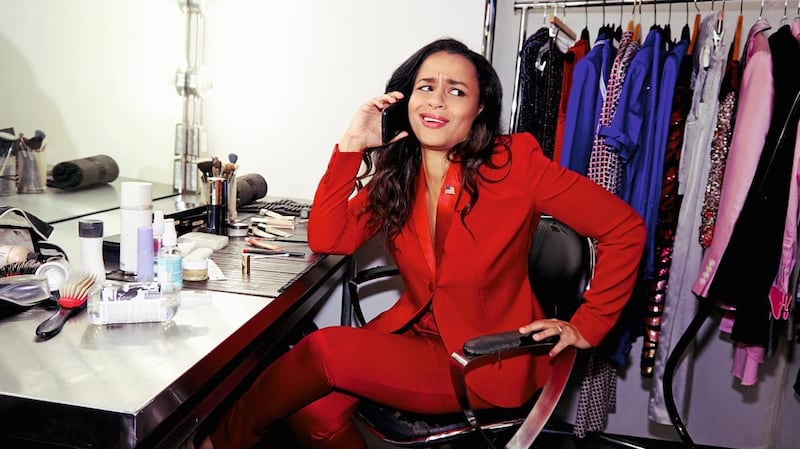Search for TikTok jobs in Dublin and it won’t take long to find recruitment ads for dozens of positions with titles that reveal the challenge ahead for the popular video-sharing app.
There are the jobs that point to its imminent flexing of its nascent commercial muscles: ads quality specialist, ads moderation specialist (in multiple languages), monetisation strategy manager. And then there are the roles that reflect the darker reality of any social media platform, even one that declares it is offering “a new world that’s joy-filled” – emergency response specialist, incident response specialist (law enforcement), a policy manager for bullying and harassment, a policy manager for suicide prevention.
There appears to be no Google-style wait-and-see attitude here: the app is fast laying down its Irish roots. In January it first announced that it would establish its Europe, Middle-East and Africa (EMEA) "trust and safety hub" here, creating about 100 jobs. Later it said it would add a data privacy team, while last month it declared it would locate a $500 million (€420 million) data centre in Ireland.
But this "talent acquisition" has been happening over a summer in which TikTok has rarely been out of the international news, not because of any lip-synching or quirky dancing videos it has hosted – though it has hosted many – but because its Chinese ownership has drawn the special, unrelenting ire of a White House that loves little more than waging economic war with China.
Citing somewhat vague national security concerns, Donald Trump’s administration declared itself against TikTok, with an early August executive order designed to block all US transactions with its Chinese parent, ByteDance, with effect from September 20th. It seems not everyone’s a fan of beauty tutorials and water-based pranks.
Trump then insisted that TikTok's US operations be sold by September 15th, or else – the threat was not clearly defined – with the result that Beijing-based ByteDance has now reached a "technical partnership" agreement with Larry Ellison's database giant Oracle for its US business, stopping short of a full, algorithm-sharing sale. Ellison, one of the richest men in the world, is a fundraiser for Trump.
A rival proposal from Microsoft, meanwhile, was rebuffed, leading it to lament that its ownership "would have been good for TikTok's users, while protecting national security interests". Smarting like any rejected suitor, Microsoft drily added: "We look forward to seeing how the service evolves in these important areas."

Efficient loop
I can’t remember when or where I first heard about TikTok, but I do remember when I downloaded the app, because it was yesterday morning, as research for this column. I wanted to see if I would be served any ads (I wasn’t, as it’s still only warming up advertising). Curiosity then condemned me to its efficient loop of bizarrely mesmerising videos, all baffled grown-ups and big-eyed pets with occasional glimpses into the world of human mattress dominoes. Warning: the food porn on TikTok is at the grosser end of the spectrum.
The great secret of the app’s success is the algorithm that decides which videos to serve users next. This has helped TikTok thrive where similar ideas, such as Twitter’s Vine, have withered. But the genius of its time limits shouldn’t be overlooked. As many preteens will be able to authoritatively explain, the original maximum was 15 seconds. It’s now possible to go up to a full minute, though the videos err on the shorter side of this range, leaving less room to go wrong on comedy timing.
You could call it the ultimate expression in user-generated content, but that phrase – a buzzword only 10 minutes ago – already sounds anachronistic. For a generation weaned on YouTube, the distinction of "user-generated" means little. It is all just content, and you swipe up for your next hit. TikTok is either terribly addictive or addictively terrible. Either way, it might just beat "doomscrolling" on Twitter.
Monthly users
The app, which only became available outside China in 2017, has been downloaded globally more than two billion times, though a more pertinent figure is its tally of monthly active users. The company reported 100 million of these in the US last month, while yesterday it said for the first time that it has more than 100 million active on the app every month in Europe.
Here, Ipsos MRBI’s social media tracker estimated at the start of 2020 that 90,000 people in the Republic aged 15-plus were using the app daily. The number is likely to have swelled during lockdown, while a large slice of its most enthusiastic user base is likely to be under 15 and therefore outside the reach of an Ipsos MRBI telephone survey.
Anyone with app fatigue can sleep soundly knowing the cream of TikTok will inevitably do the rounds on other social media and messaging platforms. To date the biggest "crossover" star, for adults at least, is probably Sarah Cooper, the Trump lip-synching comedian who created her initial Trump videos using TikTok, to which she was introduced by her young nephew, but went viral thanks to Twitter. She is now making her own Netflix special.
Just as it seeks to cross its own bridge from fad status to genuine contender, TikTok’s business is being forced to splinter. The app’s claim that its trend-setting users are “making the most of right now” has some legitimacy and purchase in a year where plans have been torn up and pleasures shrunk to household games. And yet TikTok has still ended up as a football in a Trumpian trade war, because, hey, that’s 2020, and everything must be miserable.











